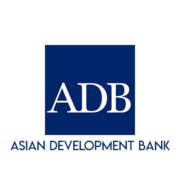MANILA, PHILIPPINES (12 December 2018) — Economies in developing Asia and the Pacific are weathering external challenges thanks to robust domestic demand, while inflationary pressures are abating, says a new report from the Asian Development Bank (ADB).
In a supplement to its Asian Development Outlook 2018 Update report, ADB retained its regional growth forecast for 2018 at 6.0% and for 2019 at 5.8%. Excluding the newly industrialized economies of Hong Kong, China; the Republic of Korea; Singapore; and Taipei,China, the regional growth outlook is maintained at 6.5% for 2018 and 6.3% for 2019.
Lower international commodity prices and central bank action to calm market volatility means inflation in developing Asia is forecast to be 2.6% in 2018 and 2.7% in 2019, down from 2.8% previously forecast for both this year and next.
“The truce on trade tariffs agreed by the United States (US) and the People’s Republic of China (PRC) is very welcome but the unresolved conflict remains the main downside risk to economic prospects in the region,” said ADB Chief Economist Mr. Yasuyuki Sawada. “That said, we are keeping our forecasts for the region’s growth unchanged for this year with some of the biggest economies continuing to hold up well.”
Growth in the PRC, the second largest economy in the world, is still expected at 6.6% in 2018, moderating to 6.3% next year. Growth momentum continues in India on rebounding exports and higher industrial and agricultural output. Growth is predicted at 7.3% in 2018 and 7.6% in 2019.
Gross domestic product growth in Central Asia in 2019 is now forecast at 4.3%, up from the 4.2% forecast in September, as a recovery in public investment and higher output from the Shah Deniz gas field enhance prospects in Azerbaijan. South Asia’s 2019 growth is now pegged at 7.1% versus the 7.2% forecast in September. Southeast Asia is expected to grow 5.1% in 2019 versus the previous forecast of 5.2%. The Pacific is on track to expand 3.1% in 2019.
ADB is committed to achieving a prosperous, inclusive, resilient, and sustainable Asia and the Pacific, while sustaining its efforts to eradicate extreme poverty. Established in 1966, it is owned by 67 members—48 from the region. In 2017, ADB operations totaled $32.2 billion, including $11.9 billion in cofinancing.
–
This article was first published by the Asian Development Bank (www.adb.org).




